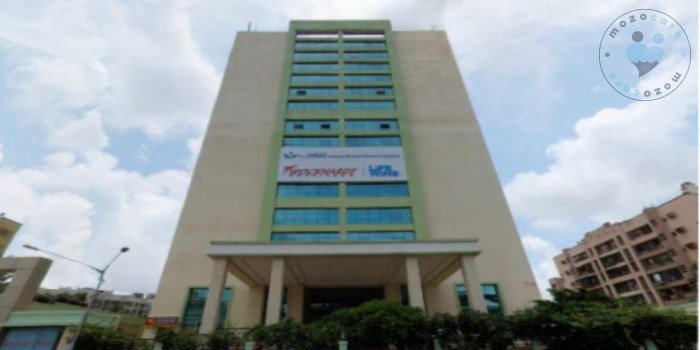

There are many factors that can affect the costs
Transcatheter aortic valve implantation (TAVI), which may also be referred to as transcatheter aortic valve replacement (TAVR), is a surgical procedure performed to replace the aortic valve without performing open surgery.
It is performed as an alternative to aortic valve replacement surgery, for patients who are unable to endure open surgery due to age or medical conditions which make the surgery too high risk to perform.
Transcatheter aortic valve implantation (TAVI), which may also be referred to as transcatheter aortic valve replacement (TAVR), is a surgical procedure performed to replace the aortic valve without performing open surgery. It is performed as an alternative to aortic valve replacement surgery, for patients who are unable to endure open surgery due to age or medical conditions which make the surgery too high risk to perform. The heart serves the function of circulating blood around the body and is comprised of 4 valves, the aortic valve, pulmonary valve, mitral valve and the tricuspid valve.
The aortic valve has 3 openings, referred to as leaflets or cusps, which contract to help to circulate the blood around the body. Patients who have have problems with their aortic valve, such as aortic valve stenosis or aortic valve regurgitation, whereby there is a problem controlling the blood flow, usually require the aortic valve to be replaced. However, not all patients may be suitable to undergo open heart surgery due to age or medical conditions that put them at high risk. The TAVI procedure is a minimally invasive procedure that can provide patients with an alternative option to open surgery and may also provide a quicker recovery time. The procedure involves making an incision in the femoral artery in the groin (known as transfemoral) or in the left side of the chest (known as transapical), and from there, passing a catheter through the incision, along the artery, to the heart.
The new valve is passed through the catheter and to the heart, then positioned and implanted into the existing valve. The catheter is then removed, leaving the new valve in place. Recommended for Aortic valve stenosis Aortic valve regurgitation Time requirements Number of days in hospital 5 - 10 days . Patients will be monitored closely in the day proceeding the procedure and will need to stay in hospital to recover and rest. Average length of stay abroad 10 - 14 days. Patients will need some time to recover and will need to be cleared by the surgeon before flying. Number of trips abroad needed 1. TAVI is performed to replace the aortic valve without performing open surgery. Time requirements Number of days in hospital 5 - 10 days . Patients will be monitored closely in the day proceeding the procedure and will need to stay in hospital to recover and rest. Average length of stay abroad 10 - 14 days. Patients will need some time to recover and will need to be cleared by the surgeon before flying. Number of trips abroad needed 1. . TAVI is performed to replace the aortic valve without performing open surgery.,
Before the procedure, the patient will meet with the consultant to establish that they are a suitable candidate to undergo the procedure. The doctor will usually run a series of tests such as a physical examination, blood tests, chest X-ray, an ultrasound, CT (computerized tomography) scan, and angiogram. Patients with complex conditions may benefit from seeking a second opinion before beginning a treatment plan.
A second opinion means that another doctor, usually an expert with a lot of experience, will review the patient's medical history, symptoms, scans, test results, and other important information, in order to provide a diagnosis and treatment plan.
The patient will first be administered with a general anesthetic. There are 2 different approaches to performing TAVI. The first approach involves the surgeon making an incision in the femoral artery in the groin and then passing a catheter through the incision and up to the heart. Alternatively, the surgeon will make an incision on the left side of the chest and from there, pass catheter through the incision and to the heart. A balloon device containing the new valve is attached to the catheter and then the new valve is implanted inside the existing aortic valve and the balloon is expanded, which aids the new valve to replace the function of the natural valve.
Once the new valve is in place and functioning correctly, the catheter is then removed and the incision site is closed with sutures. Materials The valve used may be a mechanical valve (man-made) or a biological valve (made from animal tissues). Anesthesia General anesthetic. Procedure duration The Transcatheter Aortic Valve Implantation (TAVI) takes 1 to 2 hours. A balloon device containing the new valve is passed through a catheter and to the heart to replace the aortic valve.,
Post procedure care If the incision was was made in the chest, a chest drain is usually put into place after the procedure to drain any excess fluid from the chest cavity.
The patient will usually be monitored closely for the first 48 hours after the procedure and will need to stay in hospital for 5 to 10 days, depending on the recovery.,
| Fortis Escorts Heart Institute | |
| Medanta - The Medicity | |
| Max Super Specialty Hospital Shalimar Bagh | |
| Wockhardt Hospital South Mumbai | |
| Wockhardt Super Specialty Hospital Mira Road | |
| Fortis Hospital Bangalore | |
| Fortis Hospital Bangalore | |
| Fortis Hospital Bangalore | |
| Narayana Health: Health City Bangalore | |
| CARE Hospitals, Hi-Tech City |

New Delhi, India

Gurgaon, India

New Delhi, India

Mumbai, India

Mumbai, India